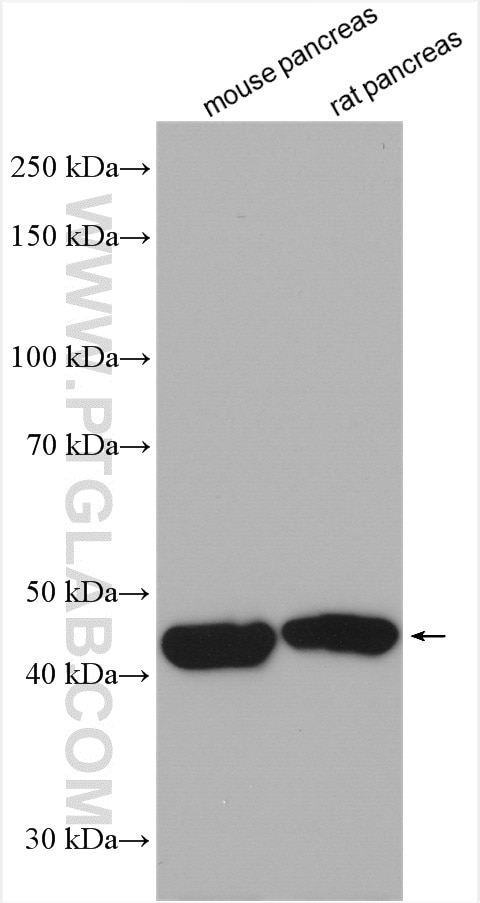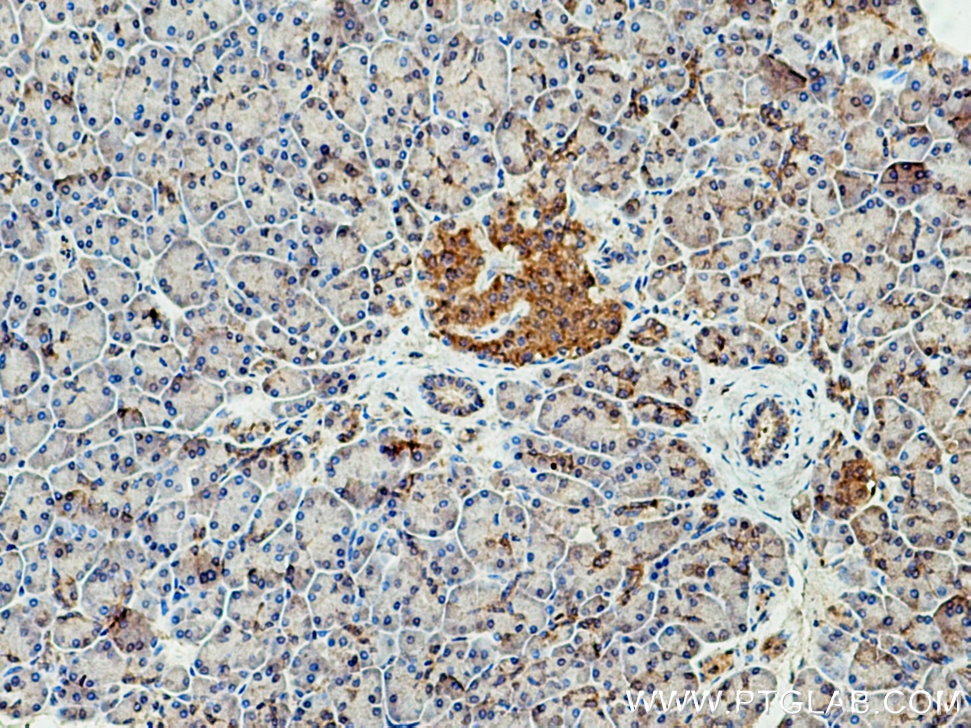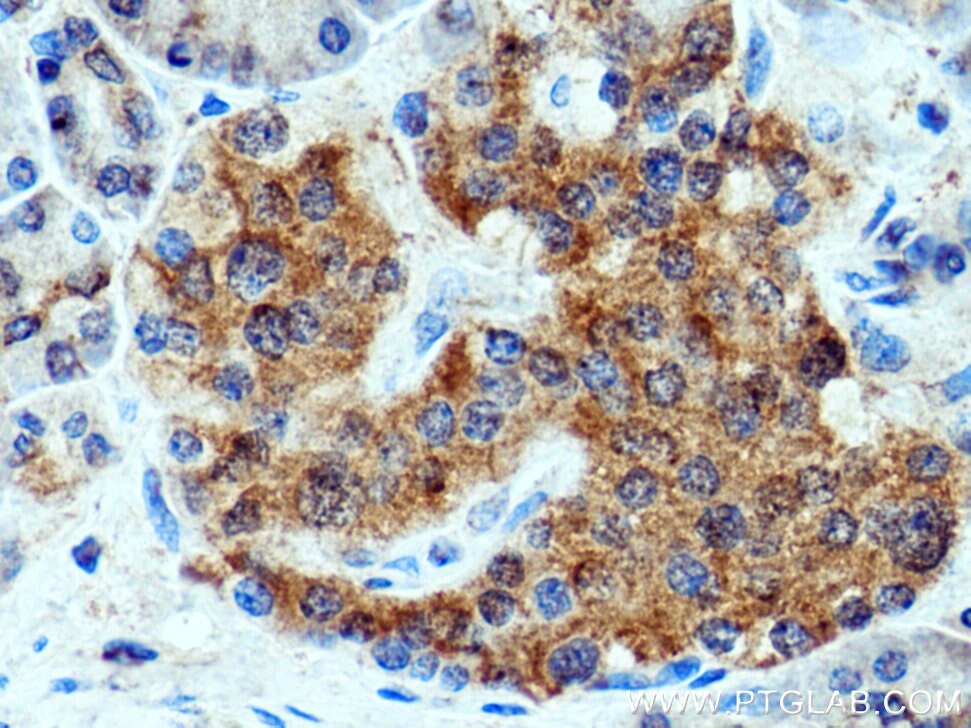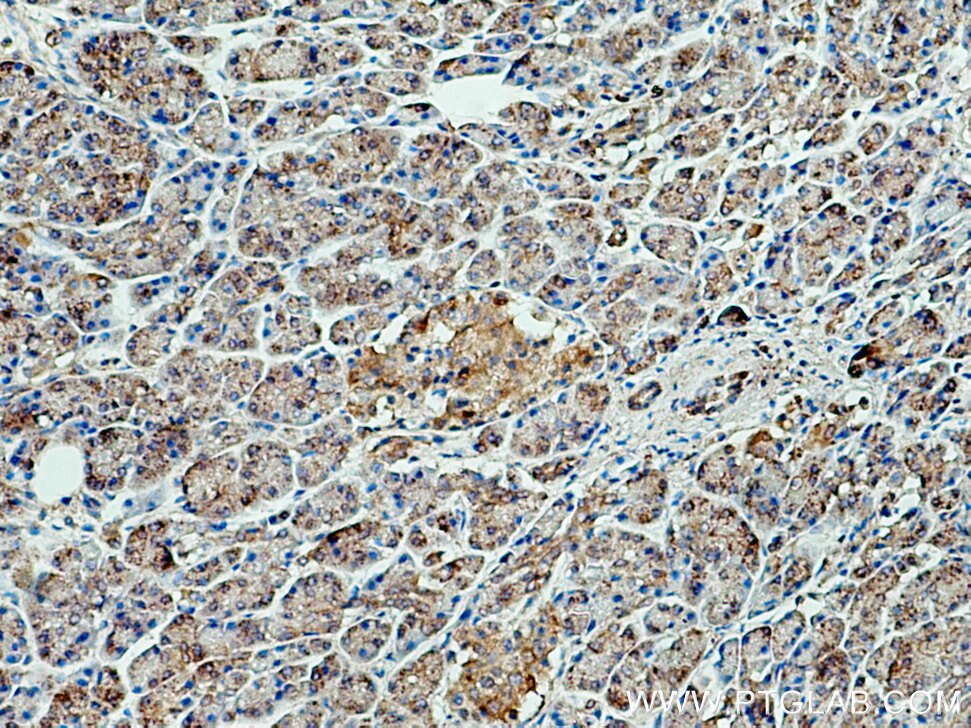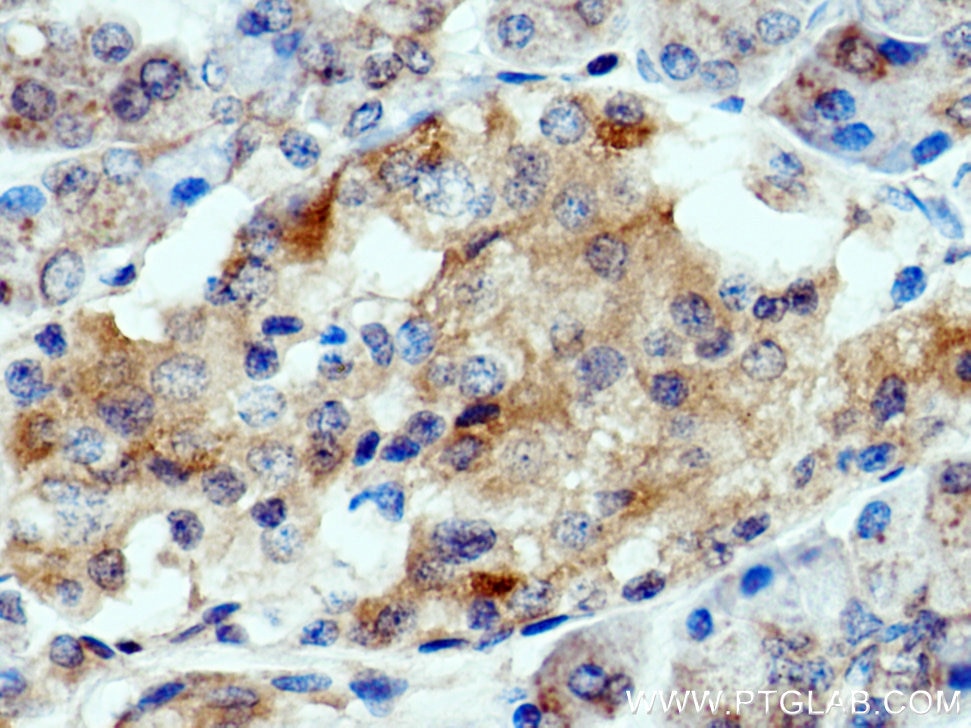Anticorps Polyclonal de lapin anti-GCAT
GCAT Polyclonal Antibody for WB, IHC, ELISA
Hôte / Isotype
Lapin / IgG
Réactivité testée
Humain, rat, souris
Applications
WB, IHC, ELISA
Conjugaison
Non conjugué
N° de cat : 16317-1-AP
Synonymes
Galerie de données de validation
Applications testées
| Résultats positifs en WB | tissu pancréatique de souris, tissu pancréatique de rat |
| Résultats positifs en IHC | tissu pancréatique humain, tissu de cancer du pancréas humain il est suggéré de démasquer l'antigène avec un tampon de TE buffer pH 9.0; (*) À défaut, 'le démasquage de l'antigène peut être 'effectué avec un tampon citrate pH 6,0. |
Dilution recommandée
| Application | Dilution |
|---|---|
| Western Blot (WB) | WB : 1:10000-1:40000 |
| Immunohistochimie (IHC) | IHC : 1:200-1:800 |
| It is recommended that this reagent should be titrated in each testing system to obtain optimal results. | |
| Sample-dependent, check data in validation data gallery | |
Applications publiées
| WB | See 1 publications below |
Informations sur le produit
16317-1-AP cible GCAT dans les applications de WB, IHC, ELISA et montre une réactivité avec des échantillons Humain, rat, souris
| Réactivité | Humain, rat, souris |
| Réactivité citée | souris |
| Hôte / Isotype | Lapin / IgG |
| Clonalité | Polyclonal |
| Type | Anticorps |
| Immunogène | GCAT Protéine recombinante Ag9367 |
| Nom complet | glycine C-acetyltransferase (2-amino-3-ketobutyrate coenzyme A ligase) |
| Masse moléculaire calculée | 419 aa, 45 kDa |
| Poids moléculaire observé | 45 kDa |
| Numéro d’acquisition GenBank | BC014457 |
| Symbole du gène | GCAT |
| Identification du gène (NCBI) | 23464 |
| Conjugaison | Non conjugué |
| Forme | Liquide |
| Méthode de purification | Purification par affinité contre l'antigène |
| Tampon de stockage | PBS with 0.02% sodium azide and 50% glycerol |
| Conditions de stockage | Stocker à -20°C. Stable pendant un an après l'expédition. L'aliquotage n'est pas nécessaire pour le stockage à -20oC Les 20ul contiennent 0,1% de BSA. |
Informations générales
GCAT (Glycine acetyltransferase) is an enzyme involved in the metabolism of amino acids, specifically in the degradation of L-threonine to glycine. GCAT expression can be regulated epigenetically, and its downregulation has been linked to mitochondrial respiration defects, particularly in aging cells (PMID: 26000717).
Protocole
| Product Specific Protocols | |
|---|---|
| WB protocol for GCAT antibody 16317-1-AP | Download protocol |
| IHC protocol for GCAT antibody 16317-1-AP | Download protocol |
| Standard Protocols | |
|---|---|
| Click here to view our Standard Protocols |
Avis
The reviews below have been submitted by verified Proteintech customers who received an incentive for providing their feedback.
FH Lana (Verified Customer) (10-04-2019) | SDS-PAGE: 15 ug/ul RIPA lysate of the mitochondrial fraction of ST-Hdh-Q7/Q7 cells. 4-12% Bis-tris gradient gel.Transfer: Immobilon-FL transfer membranes (Millipore) O/N at 30V, 4CBlocking: SEA Block Blocking Buffer 1hPrimary Ab: O/N incubation at 4CSecondary Ab: IRDye 800CW Goat anti-Rabbit, 1:15000
 |
